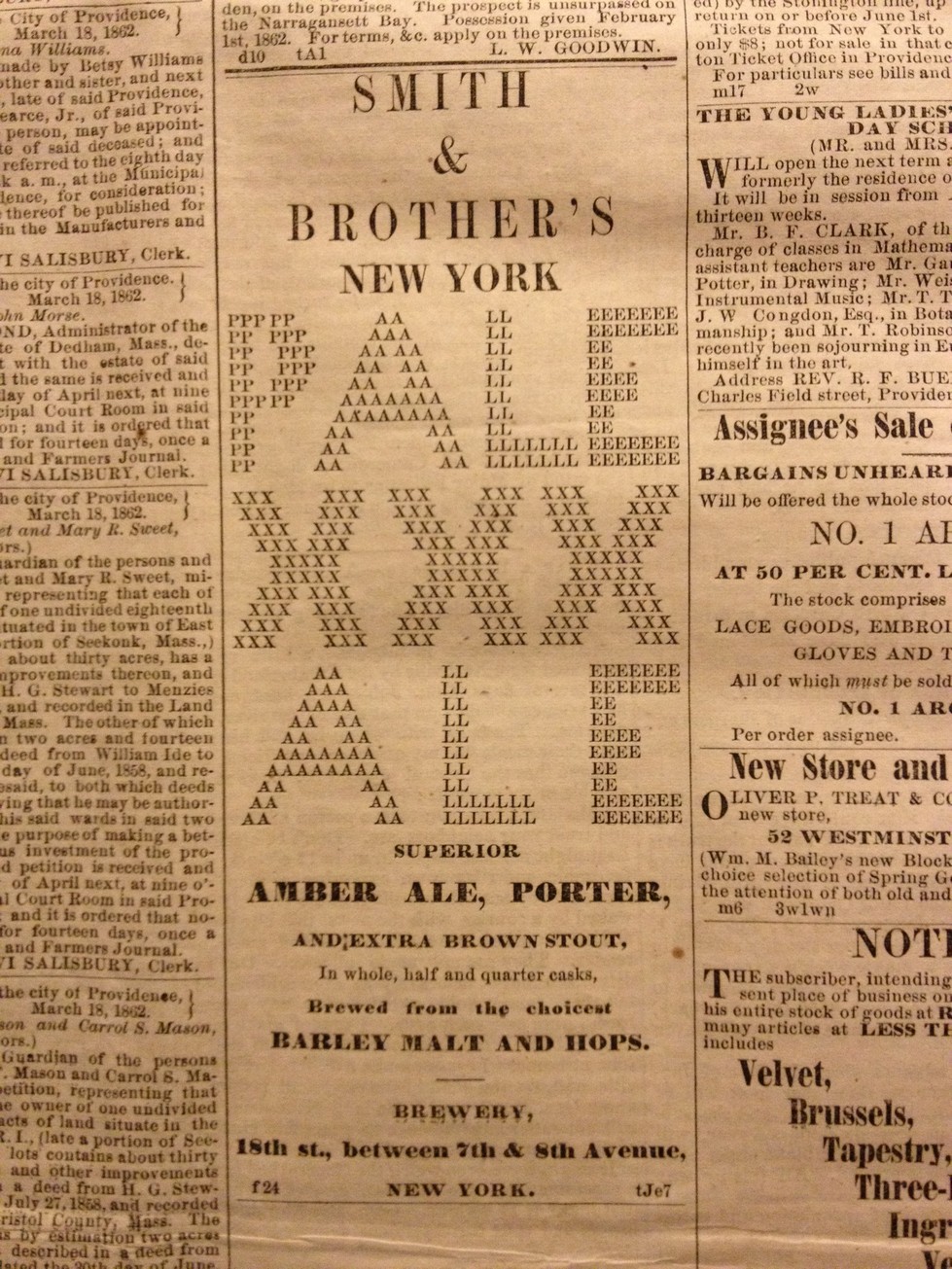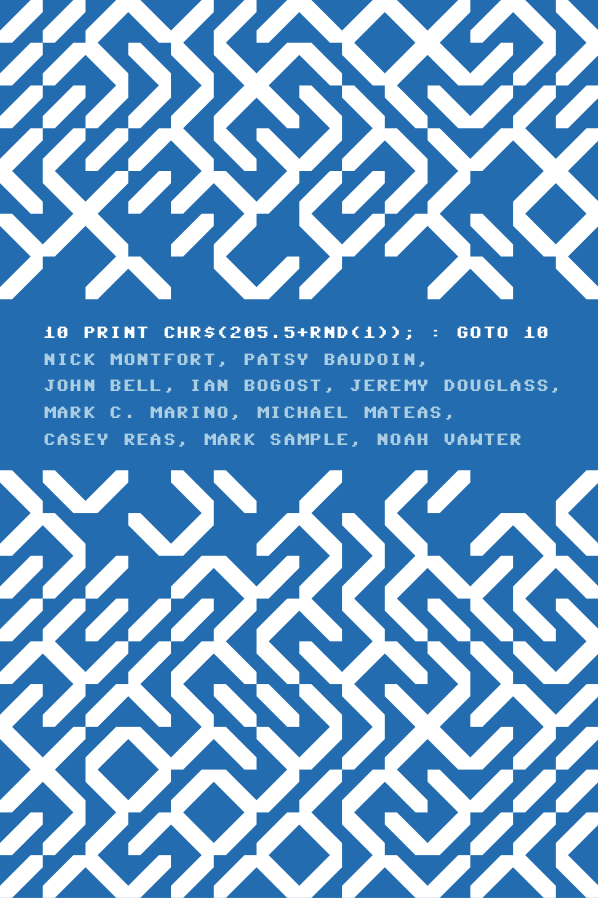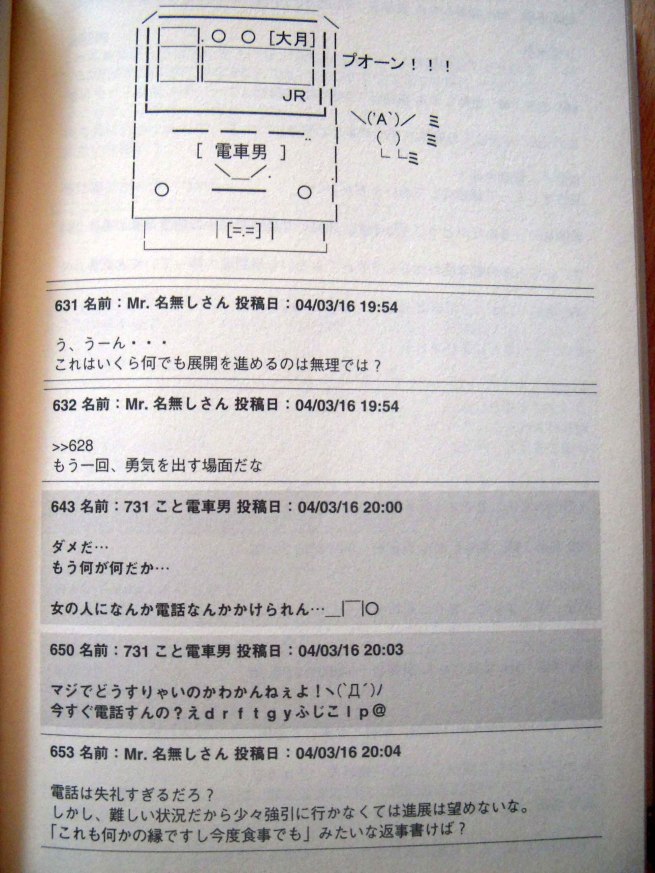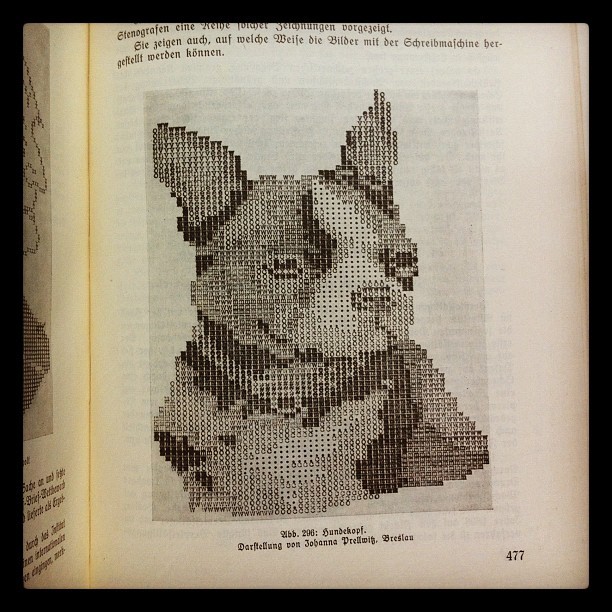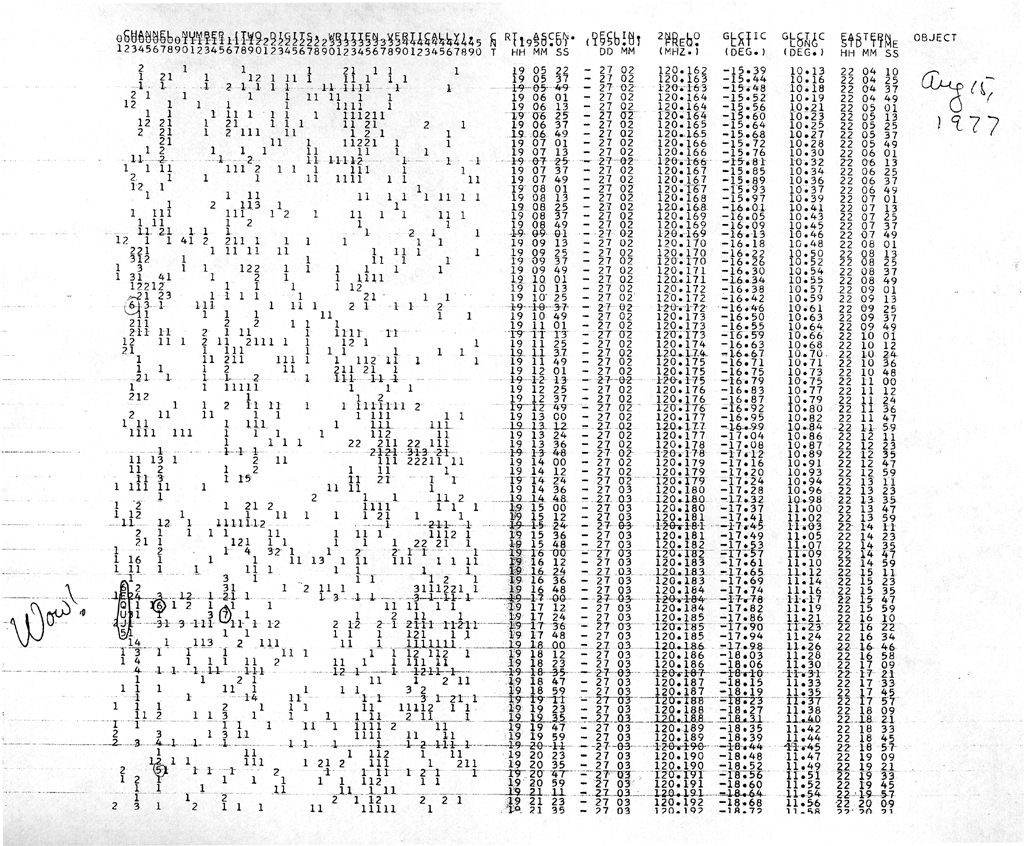Televerkets Datavision and Videotex screens from the 80s (Sweden).
They were printed on a Shinwa CPA80.
Tag Archives: print
ASCII ad in Providence Journal, 1862. More 1800’s ASCII ads here.
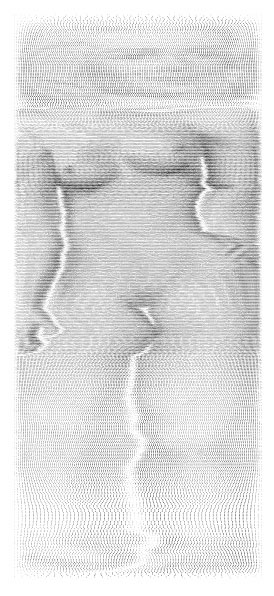
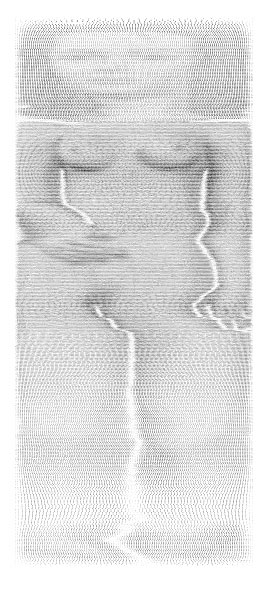
Women by Andrew Hurle, 2001. Every line is force justified (filling the whole width), which gives the rectangular form of the bodies. Shown at the Darren Knight gallery.
10 PRINT CHR$(205.5+RND(1)); : GOTO 10 (Book Cover), 2012.
The first book cover (I have seen) to use PETSCII (Commodore ASCII) characters as a pattern.
It is part of a compilation of writing from software artists (via Amazon)
“Typewriter Art”, printed in 1975 and edited by Alan Riddell, features work by artists from over 20 countries, spanning from the early 20’s through the 50’s (and the coining of the term concrete poetry) to the tripped-out 70’s.
Densha Otoko (電車男), aka Train Man, by Hitori Nakano, 2004.
Based on the purportedly true story of a 23-year-old otaku who intervened when a drunk man started to harass several women on a train. The event was chronicled on 2chan. This led to the compilation of the relevant threads in Densha Otoko.
(Link added in 2024)
The WOW marks the proof of aliens, and it’s spelled out 6EQUJ5!
SETI is the scientific method to find alien radio. It’s not an easy task, since you don’t know what you’re looking for. At all. So SETI includes some speculations. In this case, this hot text mode graph shows extremely loud occurences of the frequency 1420 MHz. That’s the frequency where hydrogen resonates, which is the most common element in the universe, so it should be the medium of choice for aliens. Fuck yeah science.
On a related note, The Arecibo message, which could also be textmode, was sent out only a few years before this discovery, in 1974. Just coincidence? The truth is out there, Scully, and it is in radio text mode.
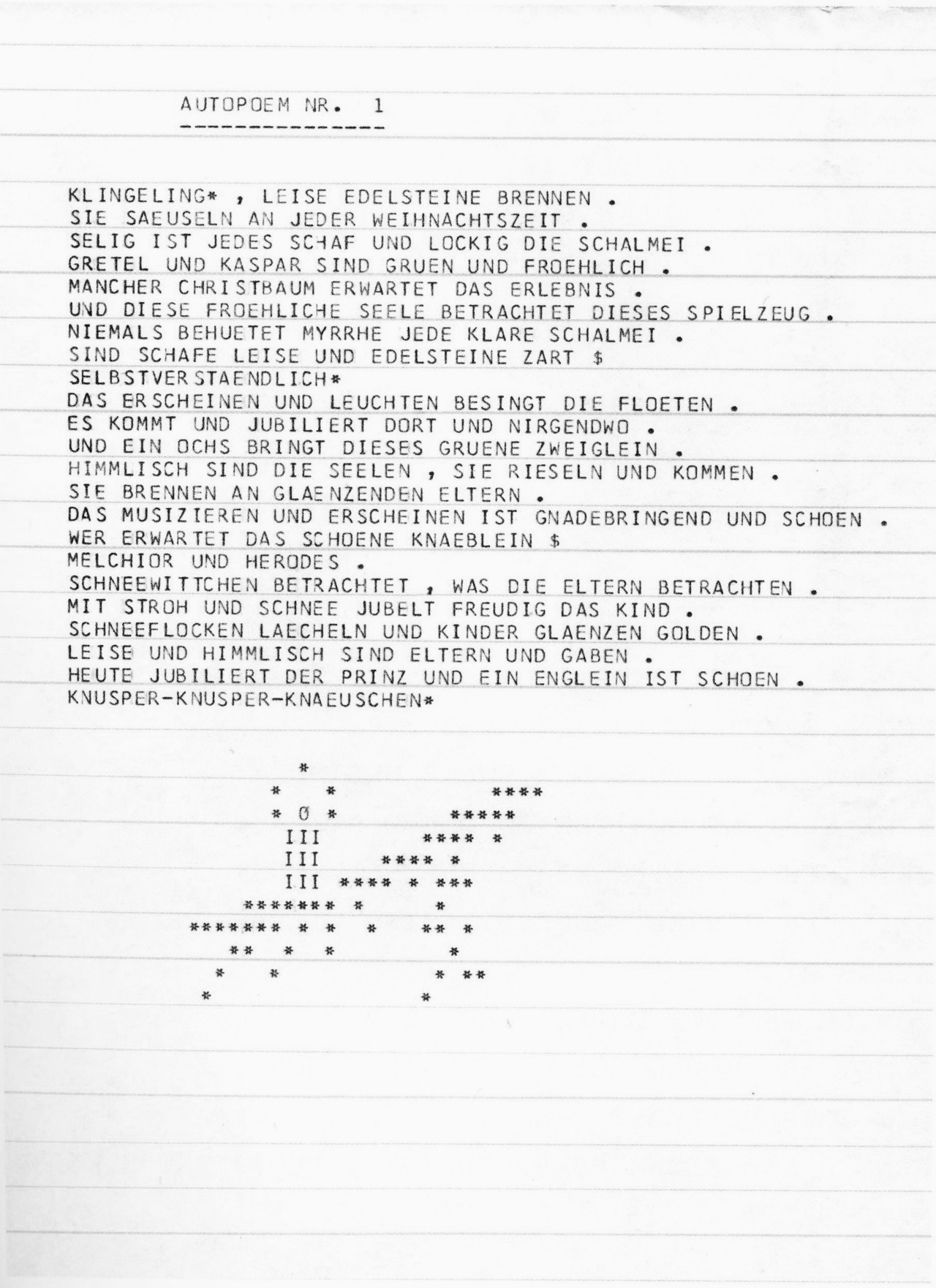
Autopoem Nr. 1 by Gerhard Stickel, 1965. Generated with an IBM 7090.











